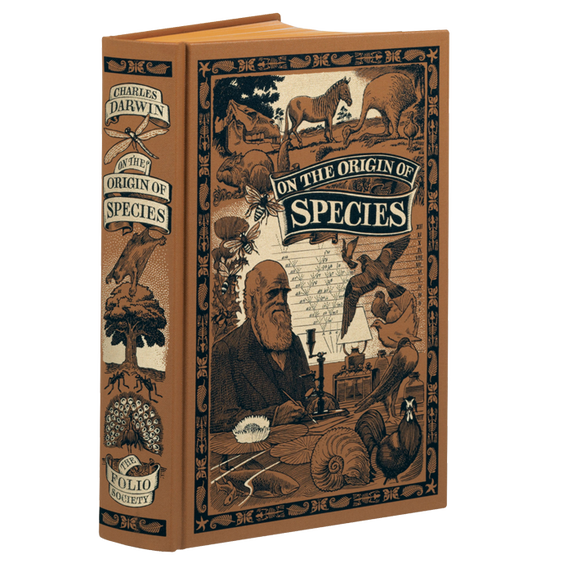
No book has revolutionised our view of life on earth more than Charles Darwin’s On the Origin of Species. Yet its enduring popularity is a testament to the immense energy and startling simplicity with which Darwin makes his revelations.
Introduced by Ruth Scurr
Robert Hooke’s science classic Micrographia changed the way we view the natural world. This beautifully crafted Folio Society edition of the complete text includes all Hooke’s original illustrations and an introduction by historian Ruth Scurr.
‘A magnificent monument to nature and human understanding.’
- Ruth Scurr
It was two o’clock in the morning on 21 January 1665 when Samuel Pepys finally put down his bedtime reading and delivered his famous verdict on Robert Hooke’s work: ‘The most ingenious book that ever I read in my life’.
Hooke's seminal work on microscopy, the study of objects through magnifying lenses and microscopes, presented previously unseen worlds to his readers. His fascinating observations and beautiful descriptions of what he saw had a far-reaching influence, making this one of the most important books in the history of science. The entire text of 1665 is accompanied by the breathtakingly detailed illustrations, including five stunning foldouts, that are the source of the book's enduring fame.
Quarter-bound in blocked cloth, with printed paper sides
Set in Caslon
392 pages
32 black & white illustrations
Including 5 foldouts
Printed and blocked endpapers
Plain slipcase with die-cut circle
11˝ x 7¼˝
Hooke’s magnificent and extraordinarily detailed illustrations of insects and plants have been reproduced for this edition from copies of the first and second editions of Micrographia held at the Bodleian Library and the Museum of the History of Science, Oxford. One of the most celebrated of these images, the extraordinarily accurate depiction of a grey drone-fly, forms the basis of the beautiful blocked endpapers. The edition also includes two important texts which elucidate Micrographia and provide different perspectives of its author. The English antiquary, natural philosopher and writer John Aubrey was a close friend of Hooke’s and he paints an affectionate portrait of ‘a person of great virtue and goodness’, voracious for knowledge from the earliest age. Aubrey’s Life is preceded by a commissioned essay on Hooke’s career and achievements, and the enduring importance of Micrographia, by historian and literary critic Ruth Scurr, whose book John Aubrey: My Own Life was shortlisted for the 2015 Costa Biography Award and the James Tait Black Memorial Prize.
‘A groundbreaking thinker and brilliant experimentalist, a founding figure in the European scientific revolution.’
- Lisa Jardine
Combining his supreme talents as a technician and a draughtsman, Hooke constructed powerful new lenses, isolated specimens – in one case, plying an ant with brandy to keep it still – and described what he saw in words and pictures, in the finest detail. Using equipment he had developed himself, Hooke presented what couldn’t be captured with the human eye – a bee’s stinger, the feet of a fly and the cellular structure of cork, to name just a few. Hooke was the Curator of Experiments at the Royal Society, chartered in 1662, and Micrographia is believed to be the first publication produced by the Society; an example of the new and distinctly English strain of scientific enquiry, trusting only empirical observation as the basis of the laws of nature. Its far-reaching influence includes the coining of the scientific meaning of ‘cell’, while its spectacular illustrations were not only groundbreaking in their method but are also some of the finest examples of scientific art ever produced.
